Implementing Kafka DLQ in Mule 4

Introduction
Kafka Dead Letter Queue (DLQ) is a specialized mechanism for handling messages that fail to process in a Kafka-based messaging system. With Mule 4's integration capabilities, implementing DLQ becomes seamless, enabling reliable message flows in distributed systems. This pattern ensures no data is lost, allowing reprocessing or detailed analysis of failed messages for continuous improvement. In this blog, we explore how Mule 4 enhances Kafka DLQ to build resilient, error-tolerant architectures.
Installing Kafka in local
Refer the blog link for installation process for Kafka - kafka - Mulecraft Blogs.
High Level Diagram
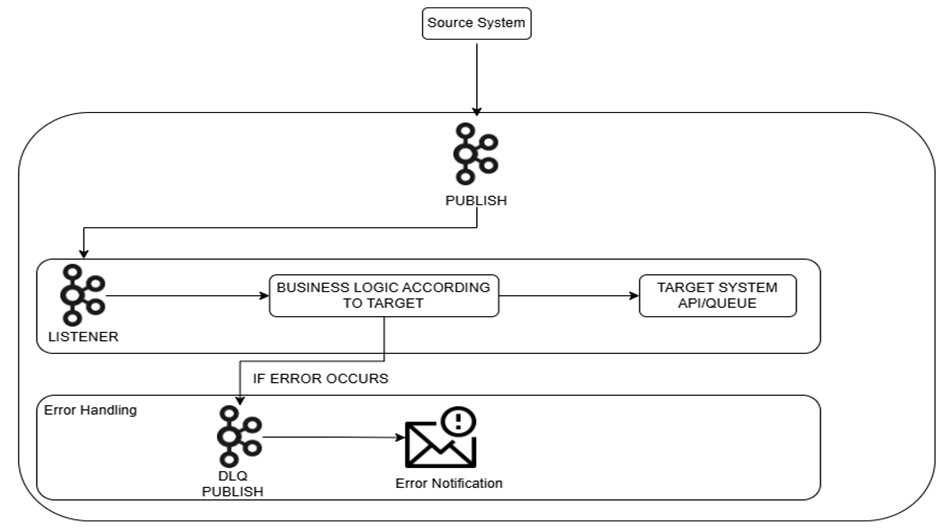
The flow begins by listening to messages from a Kafka topic using the Kafka Consumer configuration. The messages are logged for tracking and then transformed to match Salesforce's requirements.The flow attempts to insert the transformed data into Salesforce. If the insertion fails, it retries up to n times using the Until Successful scope. If the retries still fail, the message is sent to a Dead Letter Queue (DLQ) via Kafka Producer. Simultaneously, an email notification is sent to alert the team about the failure.
The flow ensures transparency and reliability by providing logs at every step. With error handling and retry mechanisms in place, this setup minimizes data loss, supports fault tolerance, and maintains system integrity.
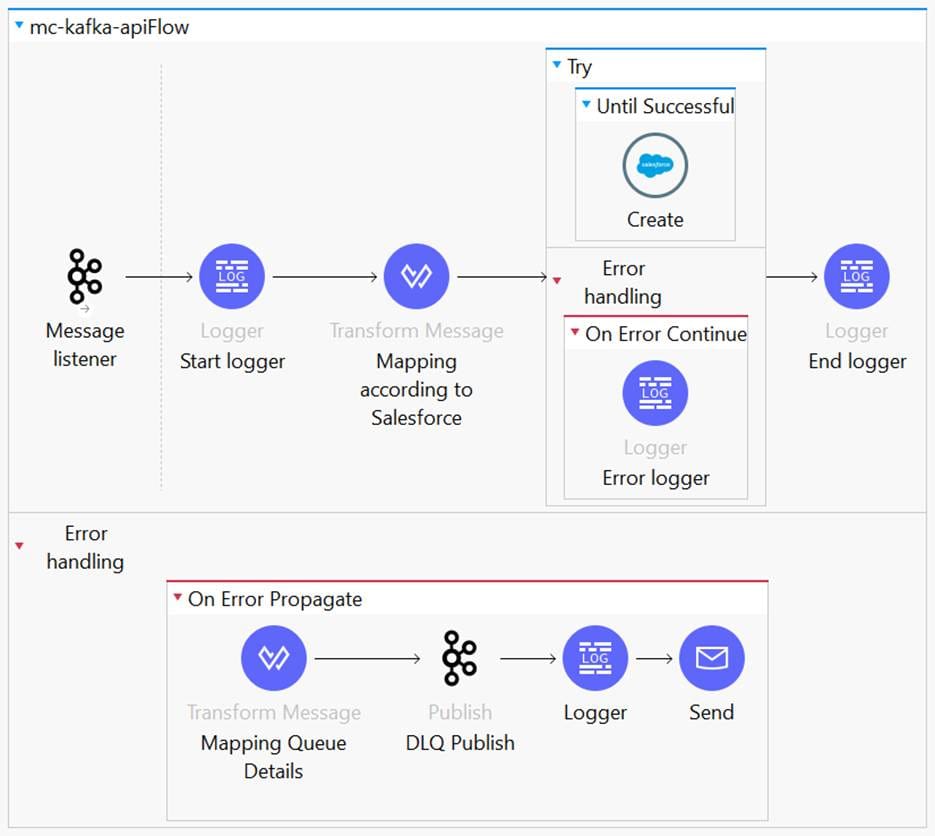
Listening From DLQ
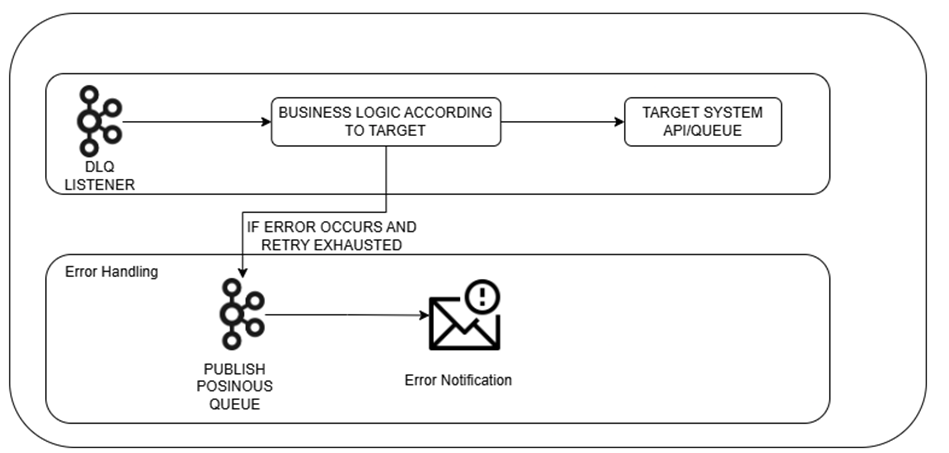
The DLQ Listener Flow processes failed messages from the Dead Letter Queue (DLQ). It starts by listening for messages in the DLQ and preparing them for the database. If the retry count of a message is within the allowed limit (n retries), it tries to insert the message into the database, retrying up to n times if needed. If the retries still fail, the message is logged and sent to a "poisonous" Kafka topic for further review.
If the retry limit is exceeded, the flow skips processing and directly sends the message to the "poisonous" topic. Throughout the process, logs are created for tracking, and if any major errors occur, an email notification is sent to alert the team.This flow ensures failed messages are handled properly without being lost, and issues are quickly identified and addressed.
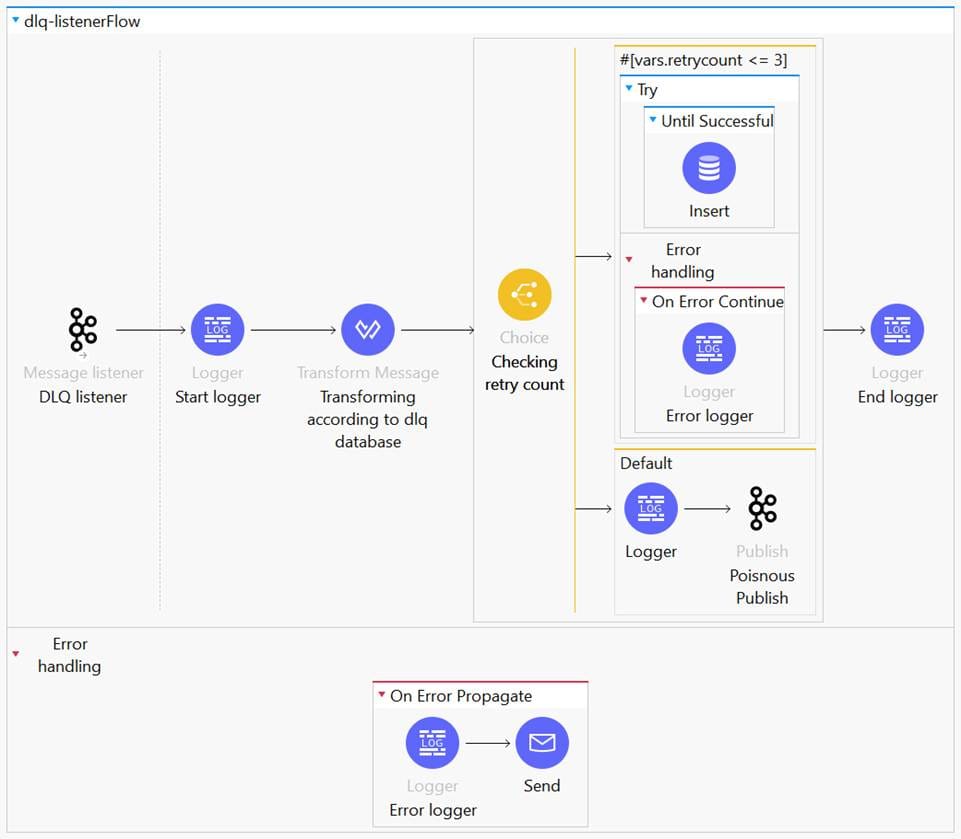
Scheduling to fetch data’s from DLQ database
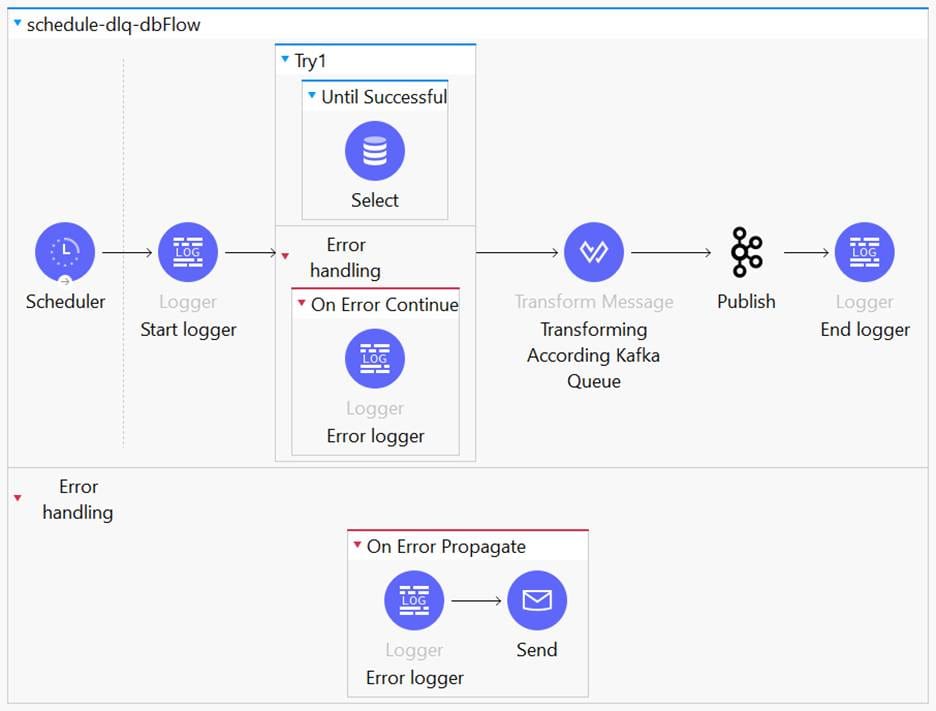
This Mule 4 flow is a scheduled job that reads data from a database and publishes it to a Kafka topic. The flow starts with a Scheduler that triggers the process at regular intervals. It uses an until-successful scope to retry the database query up to 5 times if it fails. After retrieving the data, the flow transforms it into the required format and publishes it to Kafka. Logs are added at the start and end for tracking. If any errors occur, the flow handles them by logging the issue and sending an email notification, ensuring reliability and monitoring.
Conclusion
In conclusion, this Mule 4 flow ensures a reliable and robust integration between the database and Kafka by leveraging scheduled execution, retry mechanisms with the until-successful scope, and comprehensive error handling. With proper logging and email notifications, it provides seamless monitoring and ensures data consistency and fault tolerance, making it well-suited for handling critical data workflows efficiently.
